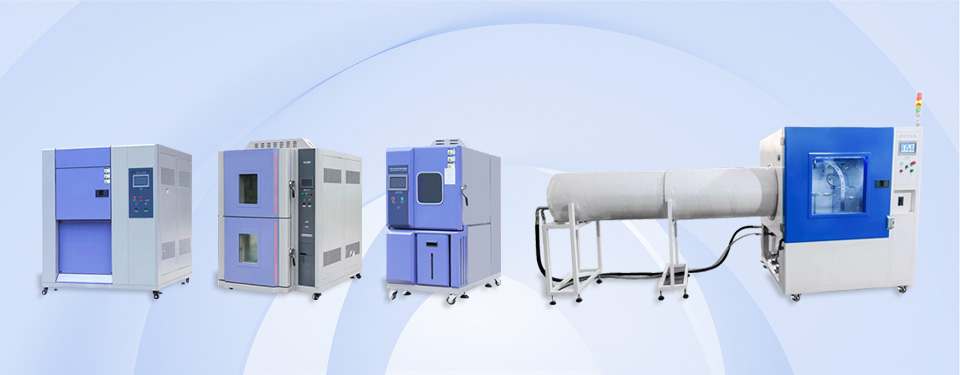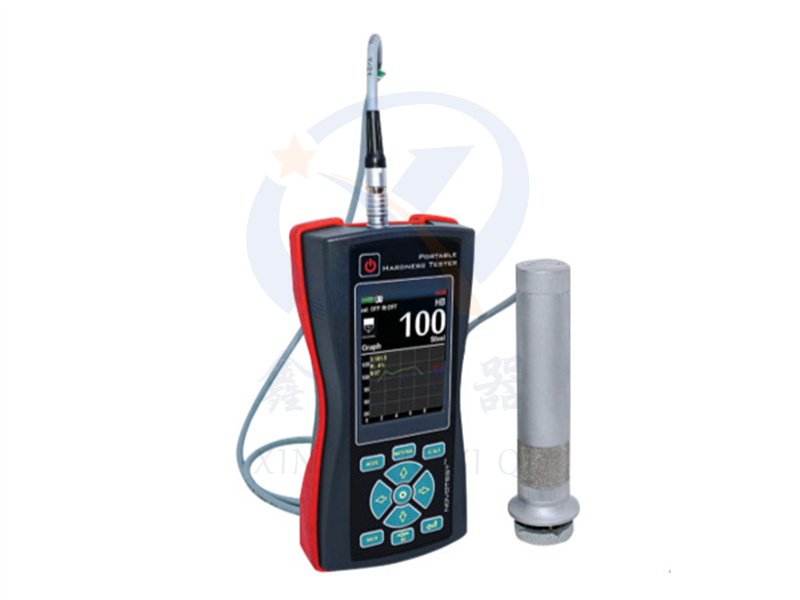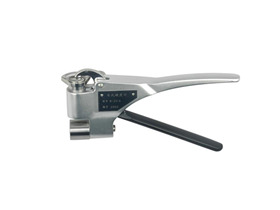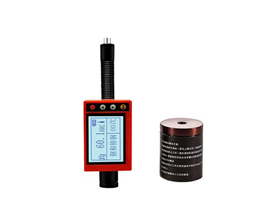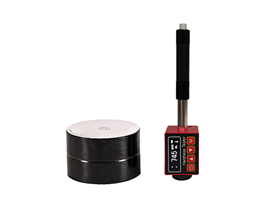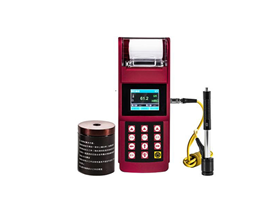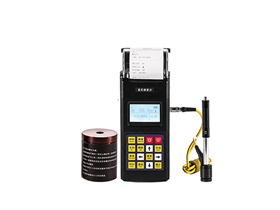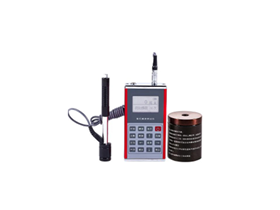Having basic characteristics:
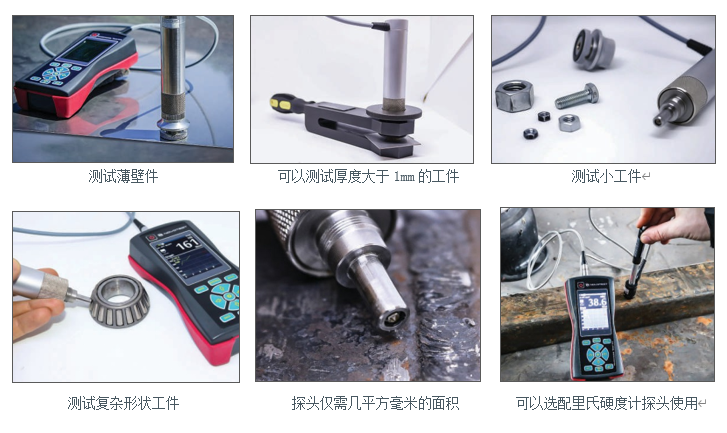
Overview:
The all-new portable ultrasonic hardness tester is a new type of intelligent hardness testing instrument. It adopts static load pressing technology, and the surface of the tested object is undamaged with few influencing factors. The measurement value is stable and accurate, and is not affected by the shape and size of the workpiece. It can be applied to materials of any shape and size, such as thin plates, coatings, gears, and curved surfaces. Even untreated rough surfaces can be measured! It has a wide range of applications, a wide measurement range, high testing accuracy, no damage to the surface of the tested object, good stability, long standby time, and simple operation.
This instrument adopts the ultrasonic contact impedance method (UCI) and complies with ASTM A1038 standard. It is a dynamic indentation method that does not directly measure indentation. A vibrating rod with a specific indenter (such as a diamond indenter) embedded at the end is excited to perform longitudinal ultrasonic vibration. A certain test force is used to press the indenter into the test surface, and the longitudinal vibration of the vibrating rod will be affected by impedance, the resonance frequency will change, and the hardness value will be obtained. This hardness measurement method has been widely used in various countries and has been in industrial use for over 50 years.
Main functions:
● Metal materials with a measurable thickness of no less than 1 millimeter, any weight or shape, such as small parts, thin-walled structures, pipes, tanks, steel plates, complex shapes, metal coatings, etc;
Due to the formation of almost invisible small marks on the surface of the product during measurement, materials such as mirrors, crankshafts, and gears can be measured;
● Surface hardening layer, metal sheet, coating (nitriding layer, carburizing layer, electroplating layer, etc.), curved surface (bearings, firing pins, cylindrical connecting rods, printing machine rollers, etc.), irregular workpieces (threads, tooth roots, cams, etc.), molds, machine guide rails, parts production lines, pressure vessels, etc;
● Wide measurement range and wide application range, including heat treatment quality control, rapid inspection of multiple measurement locations for large workpieces, workpieces that cannot be measured by other desktop and portable (Richter) hardness testers, large workpieces that are not easy to move, parts that are not easy to disassemble, and workpieces with special shapes can be measured in any direction, such as horizontal, vertical up, oblique up and down (as long as the measuring head is kept perpendicular to the surface of the measured object);
● Minimum alarm, large font display, high brightness backlight, remaining battery display;
● With a wide temperature range and low-temperature protection, the working temperature can reach minus 20 degrees Celsius;
● Equipped with internal memory, allowing users to communicate with computers;
New and intuitive menu button operation.
● Display screen LCD color screen (320 × 240)
● Display mode: curve mode, bar chart mode, statistical mode, intelligent mode, signal mode
Applicable materials:
Suitable for rapid non-destructive testing of material hardness. It has been widely applied in departments and fields such as mechanical processing, steel, shipbuilding, petrochemicals, electricity, heat treatment, molds, gears, bearings, bolts, drill bits and rods, agricultural machinery, military accessories, automotive and motorcycle accessories, printing machinery, supervision and inspection, scientific research and teaching.
● Measure various hardness of metals and alloys: Rockwell (HRC), Brinell (HB), Vickers (HV);
● Five calibration channels are set up for measuring steel and various other metals (such as non-ferrous metals, iron, and other alloys);
● Measure the tensile strength (RM) of the material;
The measurement principle adopts the ultrasonic contact impedance method (UCI), which can quickly measure workpieces from small to thin to large, accurate and reliable.
Specification parameters
|
Hardness scale
|
measuring range
|
error
|
|
rockwellC
|
20-70 HRC
|
±1.5
|
|
brudzinski
|
90-650 HB
|
±3%
|
|
Vickers
|
230-2000 HV
|
±3%
|
|
tensile strength
|
370 -1500Mparice
|
nothing
|
|
Testing materials
lower limit
|
Surface roughness(Ra)
|
2.5
|
|
Curvature radius(millimeter)
|
5
|
|
Material weight (kg)
|
0.1
|
|
Material thickness (millimeters)
|
1
|
|
Measurement direction
|
360° Any direction
|
|
Execution standards
|
ASTM A1038ASTM E140
|
|
Pressure head
|
Diamond indenter
|
|
material
|
Pre calibration (steel), user can customize materials
|
|
data interface
|
Communication cables can connect to computers, including software for data analysis and statistics
|
|
Calibration channel
|
88individual
|
|
storage
|
4GB
|
|
Working conditions
|
-20°Cto 40°C
|
|
battery
|
Two sections1.5V AAbattery
|
|
Working hours
|
Continuous measurement approximately10hour
|
|
Automatic shutdown
|
If in the1No measurement within minutes, the instrument automatically shuts down
|
|
External dimensions
|
180mm * 80mm * 35mm
|
|
weight
|
main engine0.25kg
|
|
Pre calibration using a Richter probe (material)
|
Steel, alloy steel, stainless steel, brass, aluminum, cast iron, bronze, copper
|
|
Standard configuration
|
main engine1; Ultrasonic probe(50N)1; Data cable1, Software1, Battery2; Operation manual1 Instrument box1; Standard hardness block 1
|
|
Optional Accessories
|
Various probes,Standard hardness block,Portable grinding machine
|
Probe features:
|
Probe type
|
U1 (98 N)
|
U1 (50 N)Standard configuration
|
U1 (10 N)
|
Richter's
|
|
External dimensions(Mm)
|
Ø 35х140
|
Ø 35х140
|
Ø 35х140
|
Ø 20х145
|
|
Remove the minimum contact surface of the support ring(Mm)
|
7.5
|
7.5
|
7.5
|
|
|
Remove the length of the support ring probe(Mm)
|
15
|
15
|
15
|
|
|
Weight not exceeding(G)
|
250
|
250
|
250
|
130
|
|
Surface roughness of the tested surface(Ra)
|
3.2
|
2.5
|
1.5
|
3.2
|
|
The curvature radius of the measured surface(Mm)
|
5
|
5
|
5
|
10
|
|
The weight of the workpiece shall not be less than(Kg)
|
0.1*
|
0.1*
|
0.1*
|
5*
|
|
The thickness of the workpiece shall not be less than(Mm)
|
1.5*
|
1*
|
0.8*
|
10*
|
|
Load(Kgf)
|
10
|
5
|
1
|
-
|
*When measuring the hardness of lightweight and thin-walled parts, the value is lower than the current value.
Probe application:
1. Carburization processing parts, such as camshafts, turbines, welding inspection, heat treatment quality control; Irregular workpieces (grooves, gear sides and tooth roots), turbine blades (internal pipe diameter greater than 90 millimeters), optional 50N (11.2lbf) probe
2. Ion nitriding stamping dies and molds, profiles, presses, thin-walled parts bearings, tooth surfaces, turbine blades (internal pipeline diameter greater than 90 millimeters), can choose 10N (2.2lbf), easy to apply load; Testable end face



